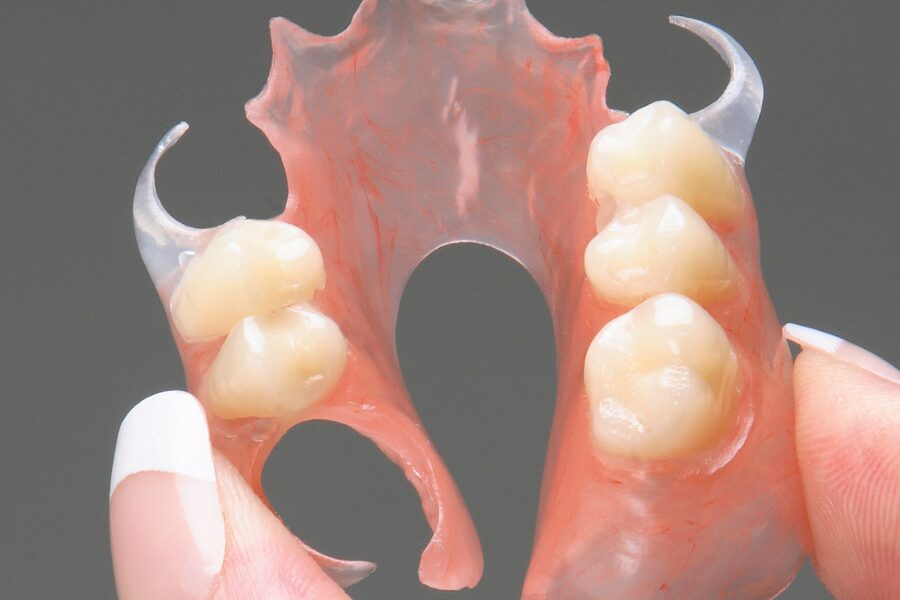When to Recommend Maxillary Partial Dentures
Maxillary partial dentures offer a practical and effective solution for restoring function and aesthetics while preserving the remaining natural teeth.
This guide will help you understand the various clinical scenarios where maxillary partial dentures are a suitable treatment option for patients, along with the advantages and contraindications of this restorative approach.

Clinical Scenarios for Maxillary Partial Dentures
1. Patients with Partial Edentulism
Partial dentures are ideal for patients who have lost some but not all of their teeth in the upper arch. These dentures can fill the gaps left by missing teeth, restoring the patient’s ability to chew and speak comfortably.
2. Transitional Solution for Future Implants
For patients planning to receive dental implants in the future, maxillary partial dentures can serve as a temporary solution while the patient heals from surgery or waits for the implant placement process to complete.
3. Cost-Effective Option
When patients face financial constraints, partial dentures offer a more affordable alternative to full dentures or dental implants. This option allows patients to address their immediate needs without compromising their oral health.
4. Preserving Remaining Natural Teeth
In cases where patients have some natural teeth remaining, partial dentures can help maintain the position and health of those teeth. This preservation is crucial for future restorative treatments and overall oral health.
5. Patients with Medical Limitations
Some patients may have medical conditions that prevent them from undergoing invasive procedures like dental implants. Maxillary partial dentures provide a less invasive option that can still deliver the desired results.
6. Interim Partial Dentures for Transition
Interim partial dentures are a practical short-term solution for patients waiting for a more permanent restoration. They are designed to last six to eight months, allowing patients to transition smoothly to a long-term option such as implants.
Advantages of Maxillary Partial Dentures
1. Versatility
Partial dentures can be customized to fit various clinical scenarios, including different types of tooth loss and patient preferences.
2. Conservation of Bone Structure
By distributing chewing forces evenly, partial dentures help preserve the remaining bone structure in the maxilla.
3. Improved Aesthetics
Maxillary partial dentures can be designed to match the patient’s natural teeth, providing a seamless and aesthetically pleasing appearance.
4. Less Invasive
Unlike dental implants, maxillary partial dentures do not require surgery, making them a suitable option for patients who prefer non-invasive treatments.
5. Quick Turnaround
Maxillary partial dentures can often be fabricated quickly, allowing patients to regain function and confidence in a shorter time frame.
6. Preservation of Natural Teeth
By avoiding the removal of healthy teeth, maxillary partial dentures promote the long-term health and stability of the patient’s natural dentition.
Contraindications for Maxillary Partial Dentures
While maxillary partial dentures offer numerous benefits, there are certain scenarios where they may not be the best option:
1. Severe Periodontal Disease
Patients with advanced periodontal disease may not be suitable candidates for partial dentures, as the remaining teeth may not provide a stable foundation.
2. Allergies to Materials
Some patients may be allergic to materials commonly used in partial dentures, such as certain metals or acrylics. Alternative materials should be considered in these cases.
3. Excessive Bone Loss
Patients with significant bone loss may struggle with the fit and stability of maxillary partial dentures.
When Should You Use Interim Partial Dentures for Your Patients?
Interim partial dentures offer a practical short-term solution that can quickly restore function and aesthetics while patients await a long-term option. These dentures are designed to last about six to eight months and can be a godsend for patients in transitional situations.
1. Buying Time for Patients
Interim partials provide a temporary solution for patients dealing with the loss of a tooth and the associated financial burden. They allow patients time to plan and manage their finances before proceeding with definitive treatment.
2. Healing from Tooth Extraction
For patients who have undergone tooth extraction, interim partials help maintain the space and preserve tissue shape while healing. They can act as a trial prosthesis for patients who will later receive removable partial dentures.
3. Preparing for Implant Placement
Patients awaiting dental implant placement may use interim partials to maintain edentulous spaces and facilitate surgical procedures. This allows for necessary ridge augmentation and implant placement while preserving function and aesthetics.
Interim Partial Denture Options to Consider
1. Resin Flipper or Partial Denture
Resin flippers or temporary partials are hypoallergenic options made from resin polymer, providing a comfortable fit and suitability for patients with allergies.
2. Aesthetic Flex™
Aesthetic Flex™ partials are thin, lightweight, and flexible, offering precise tissue adaptation and fit. They can be ideal for patients with slight periodontal mobility or as a transitional appliance for implant patients.
3. Acetal Resin Framework Partial
Acetal resin partials offer a comfortable and aesthetically pleasing option for future implant patients. These flexible partials can be transitioned to a bridge or dental implant-based restoration as the patient’s situation changes.
Call to Action for Dentists
As a dentist, your role is crucial in helping your patients achieve optimal oral health and function. When recommending maxillary partial dentures, consider the individual needs and circumstances of your patients. By understanding the advantages and limitations of this restorative option, you can provide personalized and effective treatment plans.
Educate your patients about the benefits of maxillary partial dentures and interim partials, especially in transitional situations. This empowers them to make informed decisions and leads to better long-term outcomes.
When selecting the right partial denture option, work closely with a trusted dental laboratory to ensure precision and quality in fabrication. Stay updated on the latest advancements in materials and technologies to provide your patients with the best possible care.
Incorporate maxillary partial dentures into your practice as a versatile and effective restorative option. By doing so, you can help your patients regain their confidence and improve their overall quality of life.



Leave a Reply
Want to join the discussion?Feel free to contribute!